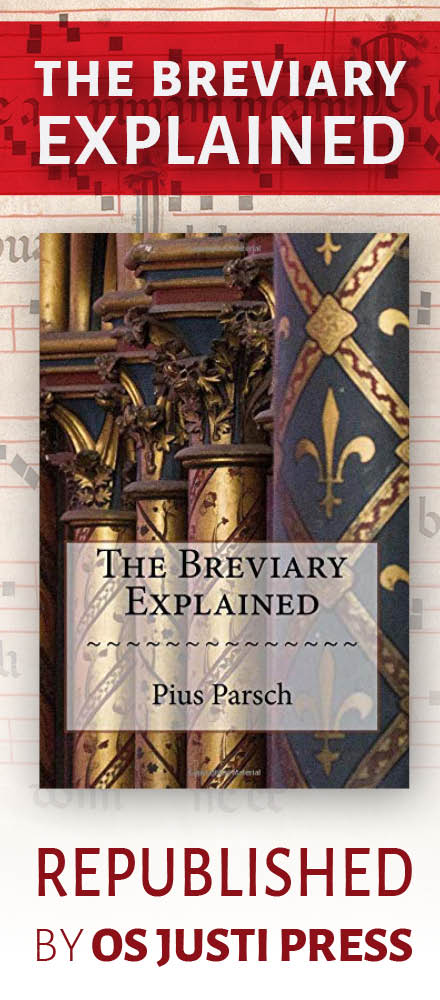Who is primarily responsible for the look, sound, and feel of liturgy at a parish? It is the pastor, and there are ever more great ones appearing as one generation gives way to the next. In most cases, the result is a liturgical improvement. The windows to tradition are being opened, so we can see and come to love our heritage; the stale air of the 70s is be displaced by a fresh appreciation of what is true and beautiful. Aggiornamento!
And yet in most parishes today, the reigning pastors came of age long before Summorum Pontificum was contemplated. Theirs was the generation that attempted to ban the past and never doubted that the future was theirs. There would never be any looking back, or so they thought. The only way forward for them was away from tradition. "Into what?" If Catholicism is no longer to be what it was, what is it hoping to become? This was never really clear in their minds, and so they became and remain the purist kind of reactionaries.
Getting this generation to look outside the window can be frustrating. This is when the cliches start appearing. Many younger Catholics long for the decorum and solemnity and seriousness of a past they can only imagine, and how is this addressed? Mostly with leftover boilerplate.
It so happens that twice today I've received notes from musicians at parishes who were confronted by older pastors who told them some variation of the following:
- This is a caring and sharing community of the people of God, and your tastes are just too cold and medieval for us.
- People want music that helps them feel the love of Jesus and each other, not this high art performance stuff that feels so alienating.
- The Church today has moved beyond all that chant in Latin, a language that no one understands anymore.
- That organ stuff might have been fine before Vatican II but it's not for today's Churches filled with people who want to participate more fully in the liturgy as a community project.
Statements like the above are always presented as if the points had never occurred to the person being clubbed over the head by them. I mean, it's not as if anyone is going to hear these points and say: "Wow, I had never thought of it like that before! Here I was stuck in the Middle Ages but now I suddenly feel called to Build the City of God and Sing a New Church into Being!"
What first strikes me about the points above is not how misguided they are, which they truly are, but how intellectually lightweight they are. They are completely lacking in anything resembling intellectual substance. They are little more than empty verbiage of the day. They are not thought; they are anti-thought, and anti-intellectual. Truly, I don't know how people who say these things without irony can do it with a straight face. How is it that self-style progressives so reliably yet unwittingly live up to caricatures of themselves?
But they do, and have for decades, and will continue to do so long as they have breath. So just a few points for older Catholics to think about before they preach the virtues of cuddly-70s-style Catholicism to younger people: 1) we've heard it all before and rejected it; 2) Look around: your utopia has not been achieved - there are very few gatherings as grim as a modern Catholic liturgy dominated by aging guitarists and praise singers; 3) Your views are not held by most anyone ordained within the last 10 years, so you are not the future but a holdover from an age of confusion.
What I find most mysterious about a certain type of Catholic who came of age immediately following the Council is an impenetrable inability to comprehend the most basic elements of what liturgy means. It is not just the work of people who just happened to be gathering together to celebrate themselves. Washing cars, picnics, baseball games -- these are the work of people. Liturgy is the means by which the Church prolongs the priestly mission of Jesus Christ; it the prayerful action of a people toward the end of touching eternity by means of sacramental grace, and so liturgy is also the work of God.
Is it not apparent that the liturgical aesthetic should be incomparable to what we find at purely secular occasions, that the usual signs and symbols by which people are brought together at sports events or picnics are not suitable for liturgical uses, and that liturgy has its own and higher standard of beauty? Certainly, and to understand this one point is the beginning of competent pastoral leadership.




















